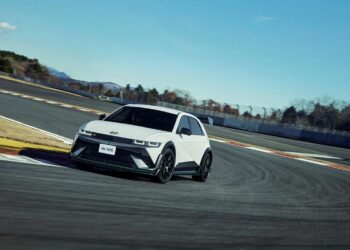The rise of racing sideways
Introduction to Drifting: Origins and Evolution
Drifting, a motorsport characterized by controlled slides and precise vehicle control, has grown from a niche activity to a globally recognized and celebrated phenomenon. The origins of drifting are deeply rooted in Japan, where the sport was born out of a unique blend of cultural, geographical, and automotive influences. Over the years, drifting has evolved, spreading across continents and captivating audiences with its blend of skill, style, and speed.
The Birth of Drifting in Japan
The story of drifting begins in the winding mountain roads of Japan, known as “touge.” In the 1970s and 1980s, Japanese street racers, known as “hashiriya,” would push their cars to the limits on these narrow, curving roads. The goal was not only to achieve the fastest time but also to maintain control while sliding through corners at high speeds. This style of driving, known as “drifting,” soon became a mark of skill among the racing community.
One of the most influential figures in the early days of drifting was Kunimitsu Takahashi, a former motorcycle racer who transitioned to car racing. Takahashi is often credited with popularizing the technique of controlled slides in car racing. His style, characterized by aggressive cornering and tire smoke, inspired a new generation of drivers to adopt and refine the drifting technique.
Another key figure in the development of drifting was Keiichi Tsuchiya, known as the “Drift King.” Tsuchiya, a professional racing driver, took the techniques he learned on the touge and applied them in competitive racing. His daring driving style and success on the track brought drifting into the mainstream, and he became a cult hero among car enthusiasts. Tsuchiya’s influence extended beyond Japan, as he played a pivotal role in introducing drifting to a global audience through his participation in events and media appearances.
The Evolution of Drifting as a Motorsport
As drifting gained popularity in Japan, it began to evolve from an underground street activity into an organized motorsport. In 1987, the first official drifting event, the “D1 Grand Prix,” was held in Japan. This event established the basic rules and format for competitive drifting, where drivers are judged not just on speed but also on style, angle, and control.
The D1 Grand Prix quickly became a major event in the Japanese motorsport calendar, attracting top drivers and large crowds. The competition format, which involves drivers competing in tandem runs, added a new level of excitement and challenge to the sport. In these tandem battles, two drivers compete head-to-head, with one leading and the other chasing, trying to match or outdo the leader’s drift.
The success of the D1 Grand Prix led to the establishment of similar events around the world. In the early 2000s, drifting began to gain traction in the United States, where it was embraced by a new generation of motorsport fans. The formation of Formula Drift in 2003 marked the beginning of professional drifting in the U.S., and the sport quickly grew in popularity. Formula Drift adopted a similar format to the D1 Grand Prix, with drivers competing in tandem battles and being judged on their style, precision, and control.
Drifting Today: A Global Phenomenon
Today, drifting is a global motorsport with a passionate fanbase and professional drivers from around the world. Major drifting events are held in Europe, Asia, the Middle East, and the Americas, each with its own unique style and cultural influences. The sport has also spawned a vibrant subculture, with dedicated communities of fans, builders, and enthusiasts who celebrate the art of drifting.
Drifting has also made its way into popular culture, featured in movies, video games, and television shows. The “Fast and the Furious” franchise, particularly the film “Tokyo Drift,” played a significant role in bringing drifting to a mainstream audience. Video games like “Need for Speed” and “Gran Turismo” have allowed fans to experience the thrill of drifting from the comfort of their homes.
As drifting continues to evolve, it remains a sport that celebrates creativity, precision, and the thrill of pushing the limits of both driver and machine. Whether on the streets of Japan, the tracks of the D1 Grand Prix, or the arenas of Formula Drift, drifting has firmly established itself as one of the most exciting and dynamic motorsports in the world.










